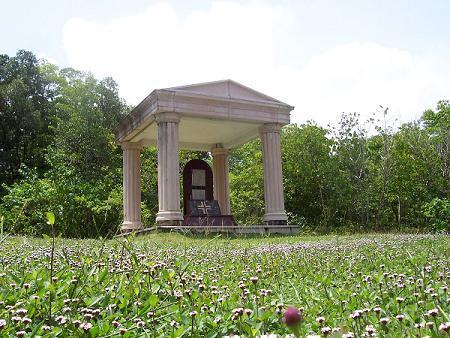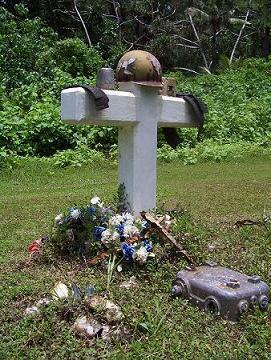
 |
 |
 |
 |
 |
| Home Page | Featured Articles | Awards | Photo Gallery | About Yvonne |
Tears filled the Marine’s eyes. He made no attempt to wipe them away. Instead, he stared across the white sandy beach lapped by low waves as the young guide’s voice described a bloody battle that took place here over 60 years ago.
Spoken words conjured images of deafening guns, whistling bullets, acrid smoke, painful screams, shouted orders and reddening sand. The Marine stared straight ahead. This had not been his battle, for he was just a little boy during this war.
But his First Marine Division had fought in this battle 62 years ago, and a Marine is always faithful—Semper Fi.
* * *
Outdoor adventure isn’t always a rip-roaring tear down a river or a ski slope. Sometimes a simple visit can become an incredible journey.
Sixty-one years ago this weekend the first atomic bomb was dropped on Hiroshima, Japan—the beginning of the end of World War II. Today, soldiers and civilians who lived through the war are far outnumbered by Baby Boomers, their children and grandchildren for whom “WWII” is only a collection of letters.
Half a world away, on the tiny island of Peleliu in the Republic of Palau, however, residents keep alive the memory of sacrifices made by those who fought the two-month-long Battle of Peleliu in 1944.
You and your companions--two Baby Boomers, a 22-year-old and the Marine—are eager to visit Peleliu’s many World War II battle sites and monuments.
Bright skies match everyone’s holiday mood as your fast boat skims the calm waters of the Palauan archipelago, a trans-equatorial tropical paradise about seven degrees north of the equator above Australia and New Guinea.

Tangie Hesus, a stocky, smiling young man carrying a thick notebook, is Peleliu’s Representative of Tourism. He drives your van over crushed coral roads into jungle, stopping in front of a square concrete structure. “This was a Japanese pillbox. These twelve holes contained Japanese machine guns pointed to the Philippine Sea.”
For the next couple of hours, you explore bombed-out buildings and some of the 200-plus pillboxes, bunkers and caves left from the 1914-1944 Japanese occupation. “When World War II began, the Japanese frightened the locals with war propaganda. They said, ‘Americans have horns and eat people.’ My grandma was scared.”
Everywhere, thick jungle green envelops rusted tanks, trucks, plane wrecks and machine guns where warriors abandoned them decades ago.
Islanders have converted one former Japanese building to a WWII museum honoring both Japanese and American fighters. Nearby is a four-columned Memorial to Peace made of atomic-bombed stone, the plaque says.
Not only is Peleliu a virtual outdoor museum of WWII history, Tangie is a walking history book filled with details you never heard in school. You lean in closer.
“It started September 12, 1944 with an aerial bombardment by the Americans. On September 15, the invasion began. Since 1995, we celebrate September 15 as a holiday. The Americans thought the battle would take three days. Instead, it took two months for the Americans to get the Japanese out. Over 10,000 Japanese were killed, but 200 of them hid in caves long after the war was officially over. They survived by coming out at night and stealing food. In 1947 the last of them came out, asking for suicide or surrender.”
A high rocky ridge runs like a dragon’s back down the center of the six-mile long island. “This limestone hill is the northern part of Bloody Nose Ridge. There’s a cave 65 meters [about 65 yards] long inside. It had medical facilities and was hidden during the American bombardment.
“Col. Lewis ‘Chesty’ Puller commanded the fighting on Bloody Nose Ridge. The privates were put in front with bazookas and flamethrowers.
“They fought at night, hand to hand, no ammunition, food or water. They used limestone rocks to kill the Japanese at night. One of the officers, Captain Pope, won the Medal of Honor. He came back in 1994 for the 50th anniversary of the Battle of Peleliu. This hill is now called Pope Hill.”
You hike along a narrow trail through lush vegetation, dodging exposed roots and jutting branches, stopping in front of a dark hole facing a crescent beach. This hole was a bunker used by the Japanese during the battle at White Beach.
Opening his thick notebook, Tangie shows pictures of a devastated jungle. “This is what White Beach looked like after the Americans used flamethrowers.” Then he points out a plaque commemorating the fighting at White Beach. “I put this plaque here in 1999.”
As Tangie narrates the events of the fighting at White Beach, waves lap the sunny shore and wind rattles palm fronds. Words of battle seem incongruous in such a setting.

At a park-like grassy area, granite markers flank well-tended banks of flowers. “For five years, the bodies of the American Marines were buried here. But it’s a tradition that a Marine always goes home, so eventually all the bodies were taken back to the US for burial, many to Arlington National Cemetery [near Washington DC] or Punchbowl National Cemetery [in Hawaii].”
He continues in a voice barely heard above the wind in the ironwood trees. “We never forget the Marines because they gave us freedom. We take care of this still. We plant flowers so that all who come to Peleliu will know of the Marines.”
His simple words bring a tear to the eyes of each visitor—the Baby Boomers whose fathers fought this war, the 22-year-old who knows only what he read in school, and the Marine, whose division had fought this battle decades long gone.
Semper Fidelis—Always Faithful.
c. Ruidoso (NM) News and the Alamogordo (NM) Daily News 2006
